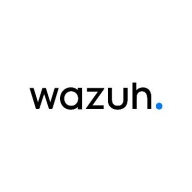

Dynatrace and Wazuh compete in the monitoring and security software category. While Dynatrace excels with integrated AI and real-time monitoring, Wazuh has a cost-effective open-source approach with a focus on security features.
Features: Dynatrace provides dynamic reporting, advanced dashboards, and real-time issue resolution. It offers integrated AI solutions and custom plugin deployment. Wazuh emphasizes open-source integration, strong logging, and compliance with PCI DSS, specializing in security monitoring.
Room for Improvement: Dynatrace could improve by simplifying its pricing, enhancing plugin support, and bettering infrastructure monitoring. Wazuh needs to enhance real-time monitoring, threat intelligence, and improve scalability for broader use.
Ease of Deployment and Customer Service: Dynatrace is praised for cloud compatibility but criticized for complex on-premises setups. Customer service is generally responsive. Wazuh is simple to deploy due to its open-source model, though documentation and support could be more robust. Customer support is limited to community resources.
Pricing and ROI: Dynatrace offers a high price point but is justified by efficiency gains and reduced downtime, providing substantial ROI. It remains a premium option. Wazuh is free and open-source, making it appealing for SMBs aiming for cost reduction, though hidden costs in extensions and support exist.
ROI is hard to specify; however, incidents like impending ransomware attacks highlight its value, though those are exceptional events.
I have seen value in security cost savings with Wazuh, as using proprietary EDR versions could save us substantial money.
They have a good reputation, and the support is commendable.
The technical support from Dynatrace is excellent.
For Dynatrace tech support, we have a dedicated team here, which is easily reachable.
They responded quickly, which was crucial as I was on a time constraint.
We use the open-source version of Wazuh, which does not provide paid support.
The documentation is good and provides clear instructions, though it's targeted at those with technical backgrounds.
If it's an enterprise, increasing the number of instances doesn’t pose problems.
It can accommodate thousands of endpoints on one instance, and multiple instances can run for different clients.
Currently, I don't see any limitations in terms of scalability as Wazuh can still connect many endpoints.
Scalability depends on the configuration and the infrastructure resources like compute and memory we allocate.
Generally, all are stable at ninety-nine point nine nine percent, but if the underlying infrastructure is not deployed correctly, stability may be problematic.
There have been no stability issues with Dynatrace.
The stability of Wazuh is strong, with no issues stemming from the solution itself.
The stability of Wazuh is largely dependent on maintenance.
The indexer frequently times out, requiring system restarts.
The definition of enterprise is loosely used, however, from a holistic security perspective, including infrastructure, network, ports, software, applications, transactions, and databases, there are areas lacking, especially in network monitoring tools.
I'm specifically looking at AIOps and how we can monitor AIOps-related things, considering we have LLMs and all that stuff.
Dynatrace stands out when making comparisons with other tools.
The integration modules are insufficiently developed, necessitating the creation of custom integration solutions using tools like Logstash and PubSub.
I think Wazuh should improve by introducing AI functionalities, as it would be beneficial to see AI incorporated in the threat hunting and detection functionalities.
Wazuh could improve by creating videos on YouTube covering installation, use cases, and integration of third-party APIs for different scenarios that other SAAS services provide.
Dynatrace is known to be costly, which delayed its integration into our system.
If I would ask you to rate price from 1 to 10, where 1 is cheap and 10 is expensive, how many points would you give to it?
Wazuh is completely free of charge.
Totaling around two lakh Indian rupees per month.
Wazuh is free to use, but there are licensing fees for third parties.
The integration with Power BI for generating detailed reports is a standout feature.
Graduation features offered by Dynatrace provide a single view and can connect with many other monitoring systems.
I find the classic service analysis, service analysis, distribution tracing, and the technology stack that it shows most valuable about Dynatrace, along with the Scape View.
Wazuh is a SIEM tool that is highly customizable and versatile.
The system allows us to monitor endpoints effectively and collect security data that can be utilized across other platforms such as SOAR.
With this open source tool, organizations can establish their own customized setup.


Dynatrace is an AI-powered software intelligence monitoring platform that accelerates digital transformation and simplifies cloud complexities. Dynatrace is an entirely automated full-stack solution that provides data and answers about the performance of your applications and deep insight into every transaction throughout every application, including the end-user experience. By modernizing and automating enterprise cloud operations, users can deliver an optimal digital experience with higher quality software to customers faster.
Dynatrace offers an all-in-one automated artificial intelligence solution that brings together application performance, cloud and infrastructure, and digital experience monitoring. Dynatrace accelerates performance-driven results through operations, development, and business teams with a shared metrics platform. In addition, users are provided a full-stack monitoring experience with three patented technologies:
What does Dynatrace offer?
Dynatrace redefines how organizations monitor their digital ecosystems. The solution offers:
Reviews from Real Users
Dynatrace is the only solution that provides answers to organizations based on deep insight into each user, transaction, and organization's environment.
Barry P., a managing performance engineer at Medica Health Plans, writes, "With Dynatrace, we have synthetic checks and real-user monitoring of all of our websites, places where members and providers can interact with us over the web. We monitor the response times of those with Dynatrace, and it's all integrated into one place."
A consultant at a tech service company notes, "A feature that's one of the highlights of Dynatrace is the AI. The second most valuable feature is OneAgent. Between infrastructures, applications, operating systems, you can deploy with just a single agent and can practically install and forget about it."
Wazuh is an enterprise-ready platform used for security monitoring. It is a free and open-source platform that is used for threat detection, incident response and compliance, and integrity monitoring. Wazuh is capable of protecting workloads across virtualized, on-premises, containerized, and cloud-based environments.
It consists of an endpoint security agent and a management server. Additionally, Wazuh is fully integrated with the Elastic Stack, allowing users the ability to navigate through security alerts via a data visualization tool.
Wazuh Capabilities
Some of Wazuh’s most notable capabilities include:
Wazuh Benefits
Some of the most valued benefits of Wazuh include:
Wazuh Offers
Reviews From Real Users
"It's very easy to integrate Wazuh with other environments, cloud applications, and on-prem applications. So, the advantage is that it's easy to implement and integrate with other solutions." - Robert C., IT Security Consultant at Microlan Kenya Limited
“The MITRE ATT&CK correlation is most valuable.” - Chief Information Security Officer at a financial services firm
We monitor all Log Management reviews to prevent fraudulent reviews and keep review quality high. We do not post reviews by company employees or direct competitors. We validate each review for authenticity via cross-reference with LinkedIn, and personal follow-up with the reviewer when necessary.